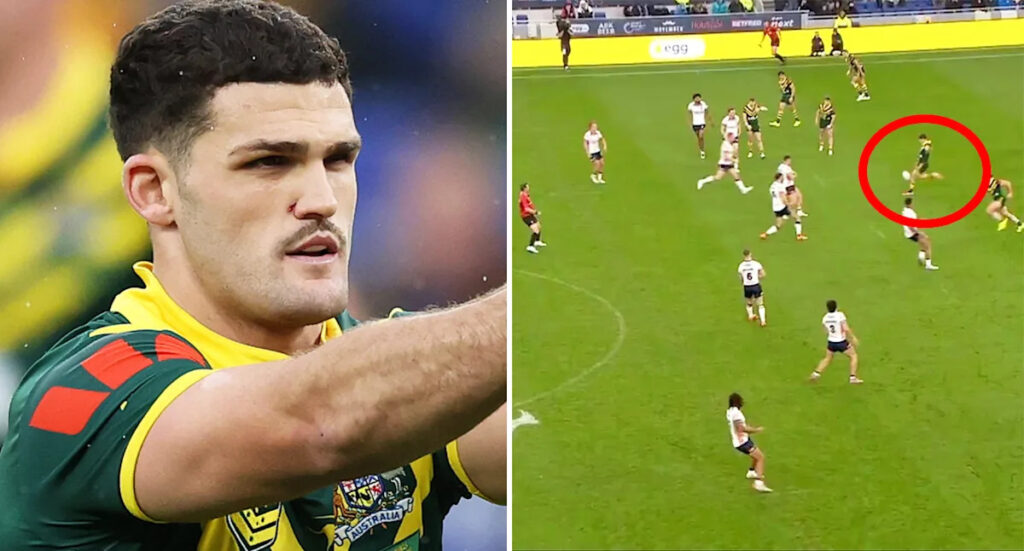
NRL fans and commentators are voicing their concerns after the second Ashes Test between Australia and England on Saturday night revealed a glaring oversight at the newly built Hill Dickinson Stadium in Liverpool. The $1.6 billion venue, typically home to Premier League side Everton, lacked visible line markings crucial for rugby league, leaving viewers and officials alike stunned.
The issue became most apparent during a pivotal moment when Nathan Cleary executed a 40/20 kick, a strategic play that nearly went unnoticed due to the absence of standard field markings. Traditionally, NRL fields are marked at 10-metre intervals, with the 40-metre lines highlighted in red. However, at Hill Dickinson Stadium, only the 10-metre and try-lines were visible, creating confusion and complicating the referee’s task.
Impact on Game Play and Referee Challenges
The absence of proper markings posed a significant challenge for referee Grant Atkins, who typically relies on these lines to maintain the defensive lines’ distance. Without them, Atkins was forced to estimate distances by sight, leading to visible struggles in keeping teams appropriately spaced.
During the match, a particularly confusing incident unfolded when Cleary’s kick was initially misjudged. The video referee had to intervene to confirm the 40/20, highlighting the critical role of line markings in officiating rugby league games.
Expert Criticism and Public Outcry
The oversight has sparked widespread criticism, with veteran journalist Paul Crawley labeling it an “embarrassment to Test match rugby league.” Writing for Fox Sports, Crawley expressed frustration over the prioritization of soccer over rugby league, stating:
“How in the hell do you have a rugby league Test match played at a state-of-the-art stadium where the referee can’t keep the teams 10 metres apart – because he can’t see the bloody lines? The ground staff were obviously more worried about the next soccer match be played there – and bugger the rugby league.”
This sentiment was echoed by fans and commentators on social media, with the ‘NRL Central’ account criticizing the lack of markings and suggesting England took advantage of the situation. Pro golfer Matthew Guyatt also weighed in, describing the match as one of the worst Test match spectacles due to the missing lines.
Historical Context and Future Implications
The controversy over field markings at Hill Dickinson Stadium is not the first of its kind. Similar issues have arisen in venues primarily designed for other sports, raising questions about the suitability of such stadiums for hosting international rugby league events.
Peter V’landys and the Australian Rugby League Commission had hoped the Ashes series would showcase the sport’s excitement and help grow its international profile. However, with England managing only one try across two matches, the series has been criticized for its lack of flair and excitement.
As the rugby league community reflects on these events, questions loom over the future of the Ashes series. The need for suitable venues that meet international standards is becoming increasingly apparent, and stakeholders may need to reconsider the choice of stadiums for such high-profile matches.
Looking Ahead
The incident at Hill Dickinson Stadium serves as a reminder of the importance of proper field preparation in ensuring fair play and maintaining the integrity of the game. As rugby league continues to seek growth on the international stage, addressing these logistical challenges will be crucial in delivering the thrilling spectacles fans expect.
Moving forward, it will be essential for organizers to prioritize venues that can accommodate the specific needs of rugby league, ensuring that such oversights do not detract from the sport’s appeal and competitive fairness.







